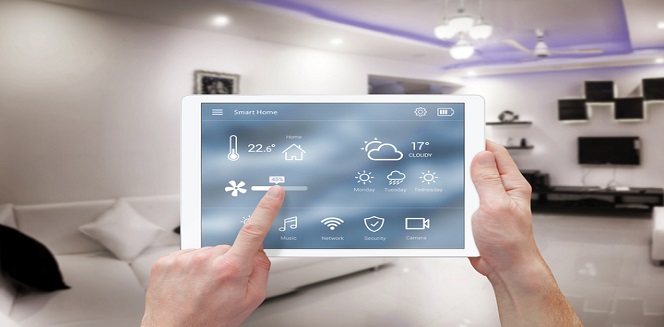
In recent years, smart lighting systems have transformed from mere utility fixtures into integral elements of modern, luxurious design. These innovative technologies offer convenience, energy efficiency, and an elevated aesthetic appeal that integrates seamlessly into any living or working space. Here’s a look at some of the latest advancements in smart lighting that are reshaping interiors across the globe.
1. Voice-Activated Lighting
One of the most significant innovations in smart lighting is the integration of voice control. With devices like Amazon Alexa, Google Assistant, and Apple’s Siri, users can now control their lighting systems without lifting a finger. This technology enhances convenience and accessibility, allowing for hands-free operation that can easily be integrated into daily routines.
Key Features:
- Voice commands to adjust brightness, color, and power status.
- Ability to set scenes and routines that match specific moods or activities.
- Integration with other smart home devices for a cohesive smart ecosystem.
2. Human-Centric Lighting
Human-centric lighting (HCL) is an innovative technology that mimics natural daylight patterns to enhance well-being and productivity. By adjusting the color temperature and intensity throughout the day, HCL systems support the body’s circadian rhythms, promoting better sleep, mood, and overall health.
Key Features:
- Automatic adjustment based on the time of day and natural light availability.
- Customizable settings to match personal preferences and lifestyles.
- Enhanced focus and relaxation depending on the lighting’s warmth and brightness.
3. Energy-Efficient LED Innovations
LED technology continues to evolve, offering increased energy efficiency and longevity. The latest LED innovations focus on reducing energy consumption while providing high-quality lighting solutions that do not compromise on performance.
Key Features:
- Long-lasting bulbs with reduced maintenance costs.
- Advanced dimming capabilities that adjust to the ambient environment.
- Integration with solar power systems for sustainable energy use.
4. Smart Lighting with IoT Integration
The Internet of Things (IoT) has revolutionized smart lighting systems, allowing for real-time monitoring and control from anywhere in the world. IoT-enabled lighting can be integrated with other smart devices to create a fully connected home or office.
Key Features:
- Remote access via smartphones and tablets.
- Data analytics for energy usage insights and optimization.
- Interoperability with other IoT devices for seamless automation.
5. Luxurious Design and Aesthetics
Beyond functionality, smart lighting systems now play a crucial role in luxury interior design. The latest designs focus on elegance and sophistication, with fixtures that blend seamlessly into high-end spaces.
Key Features:
- Sleek, minimalistic designs that complement modern interiors.
- Customizable color schemes and dynamic lighting effects.
- Artistic fixtures that serve as focal points in luxurious settings.
Is Smart Lighting Worth It?
In the evolving world of home technology, smart lighting stands out as a compelling innovation that combines smart lighting solutions with innovative technologies and luxurious design. But is this advanced lighting system worth the investment? Let’s delve into the factors that make smart lighting a valuable addition to modern spaces.
1. Enhancing Convenience with Innovative Technologies
Smart lighting systems are a prime example of innovative technologies enhancing everyday convenience. With features like remote control via smartphones, voice commands through virtual assistants, and automation options, these systems streamline lighting management and make it easier to adapt your environment to your needs.
Key Benefits:
- Remote Access: Control your lights from anywhere using a smartphone app.
- Voice Commands: Adjust brightness and colors using voice commands with platforms like Amazon Alexa or Google Assistant.
- Automation: Schedule your lights to turn on or off at specific times, or create custom lighting scenes for different activities.
2. Energy Efficiency Meets Luxurious Design
Beyond convenience, smart lighting systems offer significant energy savings and contribute to luxurious design. With the integration of LED technology, these systems not only reduce energy consumption but also add a touch of elegance to your space.
Key Benefits:
- Energy Efficiency: Smart LEDs use less power and have longer lifespans compared to traditional bulbs, reducing both energy bills and maintenance costs.
- Luxurious Fixtures: Modern smart lighting includes sleek and stylish designs that enhance the aesthetic appeal of any room, seamlessly blending functionality with sophistication.
- Customizable Ambiance: Adjust the color and intensity of your lights to create a tailored atmosphere for any occasion, adding a luxurious touch to your home or office.
3. Advanced Security and Personalization
The integration of smart lighting systems with innovative technologies also offers enhanced security and personalization. Automated lighting schedules can simulate occupancy, providing a layer of security when you’re away. Additionally, personalization options allow you to create an environment that reflects your style and preferences.
Key Benefits:
- Security Features: Timed lighting and motion sensors can deter intruders and offer peace of mind.
- Personalization: Create customized lighting scenes and settings that match your personal taste and daily routines, contributing to a luxurious and personalized living experience.
4. Considerations Before Investing
While the benefits are clear, it’s important to weigh some considerations before investing in smart lighting:
- Initial Costs: The upfront expense can be higher than traditional lighting, though it’s often offset by long-term savings on energy and maintenance.
- Compatibility: Ensure that your smart lighting system integrates well with existing smart home devices and platforms.
- Learning Curve: There may be a learning curve associated with setting up and using smart lighting systems.
Looking Ahead: Trends and Innovations in Smart Lighting
As we move forward into an era where technology and design continue to evolve rapidly, smart lighting is set to play a central role in shaping the future of our living and working environments. Emerging innovative technologies and a focus on luxurious design are driving the latest trends in smart lighting, promising even more sophisticated and aesthetic solutions. Here’s a look at what’s on the horizon.
1. Advanced Integration with Smart Home Ecosystems
One of the key trends in smart lighting is its increasingly seamless integration with broader smart home ecosystems. Future developments will enhance how smart lighting interacts with other smart devices, creating a more cohesive and responsive environment.
Key Innovations:
- Unified Control Systems: Integration with platforms like Apple HomeKit, Google Home, and Amazon Alexa will become more sophisticated, allowing for centralized control of all smart devices from a single interface.
- Enhanced Interoperability: Smart lighting systems will increasingly communicate with other smart home technologies, such as security systems, HVAC, and entertainment devices, to create synchronized home environments.
2. Evolution in Luxurious Design
The emphasis on luxurious design in smart lighting will continue to grow, with new trends focusing on creating visually stunning fixtures that enhance the aesthetic appeal of upscale interiors.
Key Innovations:
- Artistic Fixtures: Expect to see more artistic and bespoke designs that serve as focal points in high-end interiors. These fixtures will combine functionality with sculptural elements to create dramatic visual effects.
- Customizable Aesthetics: Advanced smart lighting systems will offer more customizable options for color temperature, brightness, and light patterns, allowing homeowners to tailor the ambiance to their specific tastes and occasions.
3. Human-Centric and Adaptive Lighting
The future of smart lighting will include a stronger emphasis on human-centric design, which focuses on optimizing lighting conditions to improve well-being and productivity. Adaptive lighting technologies will become more advanced, responding dynamically to the needs of users throughout the day.
Key Innovations:
- Circadian Rhythm Support: Lighting systems will increasingly mimic natural daylight patterns to support circadian rhythms, enhancing health and mood.
- AI-Powered Adaptation: Artificial intelligence will drive adaptive lighting solutions that learn from user behavior and preferences to automatically adjust lighting conditions for optimal comfort and efficiency.
4. Sustainability and Energy Efficiency
Sustainability will be a major focus, with smart lighting systems incorporating innovative technologies to further enhance energy efficiency and reduce environmental impact.
Key Innovations:
- Solar Integration: Solar-powered smart lighting solutions will become more prevalent, integrating solar panels with lighting fixtures to harness renewable energy.
- Energy Management Systems: Advanced energy management features will optimize power usage, including real-time monitoring and predictive analytics to reduce energy consumption.
5. Immersive and Interactive Experiences
Future smart lighting systems will offer immersive and interactive experiences, blending lighting with augmented reality (AR) and virtual reality (VR) to create engaging environments.
Key Innovations:
- AR/VR Integration: Lighting will be used to enhance AR and VR experiences, providing dynamic and responsive illumination that enhances virtual environments.
- Interactive Lighting Installations: Public spaces and high-end homes will feature interactive lighting installations that react to movement, touch, or sound, creating captivating visual effects.


